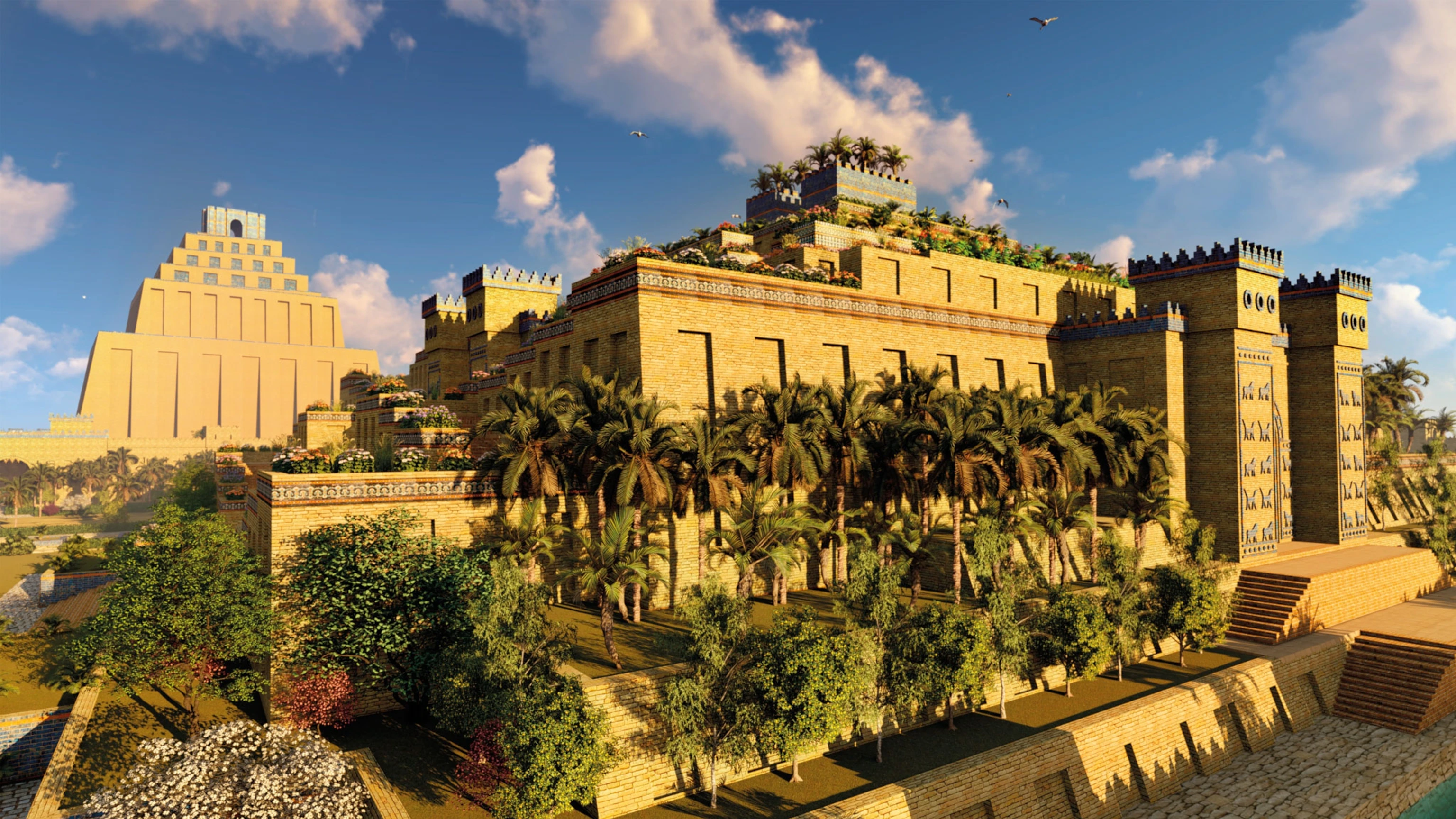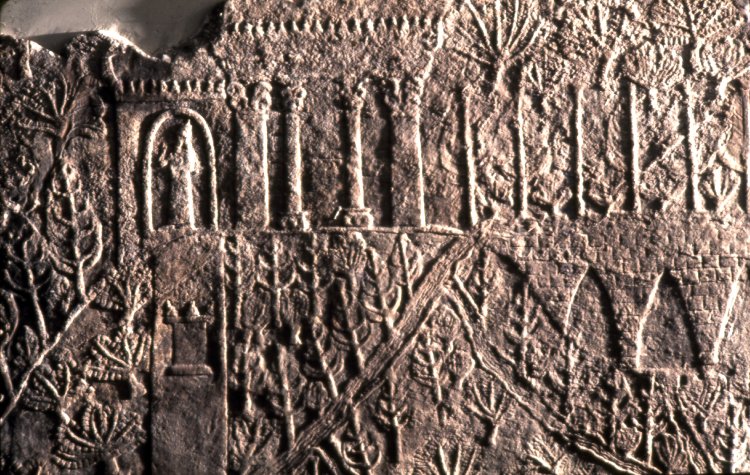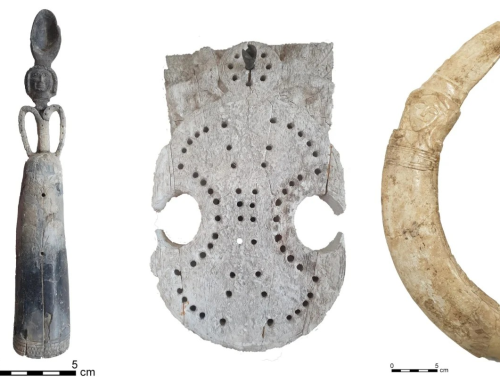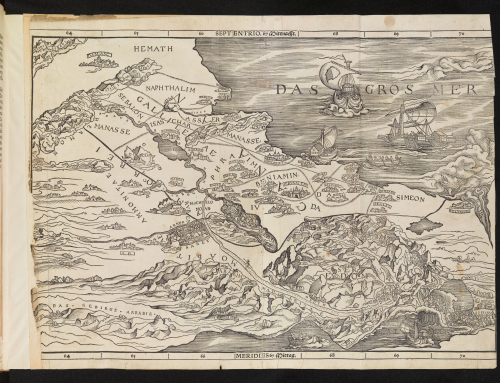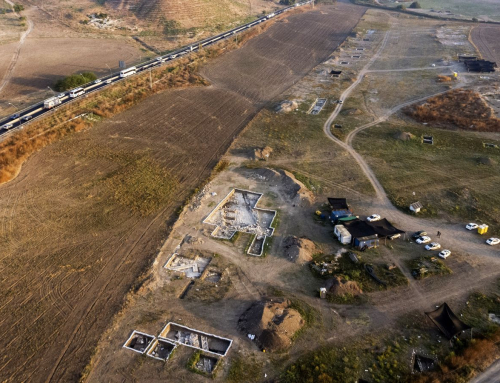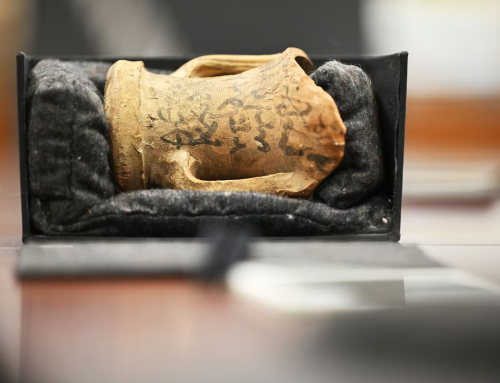At the start of the seventh century B.C.E., the Assyrian king Sennacherib called his new palace at Nineveh a “palace without a rival.” The Hebrew Bible is less kind, describing Nineveh as “that great city with more than 120,000 people who cannot discern between their right hand and their left hand” (Jonah 4:11). Located by modern Mosul in Iraq, Nineveh was undoubtedly the metropolis of its day. Was the construction so extensive as to include one of the Seven Wonders of the World?
This Assyrian relief from Nineveh (now housed at the British Museum) shows trees hanging in the air on terraces and plants suspended on stone arches that resemble those from Sennacherib’s waterways, supporting the idea of a hanging garden at Nineveh.
Okay, I know what you are thinking. We know where the Seven Wonders were, because the locations are included in their names. The Great Pyramid of Giza. The Temple of Artemis at Ephesus. The Hanging Gardens of Babylon.
Let’s stop at that last one. In the third century B.C.E., Berossus wrote that the Babylonian king Nebuchadnezzar II built the Hanging Gardens almost three hundred years earlier, and his statement was copied by later historians, including Josephus. However, there is no archaeological evidence indicating the presence of massive gardens at Babylon, and while we have hundreds of documents by Nebuchadnezzer describing his building activities, none mention his horticultural pursuits. Who else may have built the legendary gardens?
Imagine a gardener, and a tranquil picture probably comes to mind. When Biblical Archaeology Review readers think of the Assyrian king Sennacherib, tranquility is probably the last thing that comes to mind. Sennacherib rampaged through Judah, laying waste to Lachish (immortalized in his extensive reliefs on the siege—click here for seven seminal articles on the city) and besieging Jerusalem until he had King Hezekiah “locked up like a bird in a cage.”
Oxford scholar Stephanie M. Dalley presents a different side of Sennacherib in The Mystery of the Hanging Garden of Babylon: An Elusive World Wonder, in which she presents Nineveh as the actual location of the Hanging Gardens. Dalley entertainingly presented the theory in a recent episode of the PBS series Secrets of the Dead entitled “The Lost Gardens of Babylon” (PBS has the entire episode online for free).
Sennacherib’s construction of a new capital at Nineveh was a massive endeavor, and the city and its garden were supplied with a water management project unparalleled at the time. Sennacherib’s canal system, which was some 50 miles long and as wide as the Panama Canal in some sections, featured advanced sluice gates, aqueducts, millions of dressed stones and waterproof cement. His construction paid off as the city quickly flourished, and the site caught the eye of famed 19th-century archaeologist Austin Henry Layard. Much of the canal system has been buried under recent construction, so archaeologists are using Cold War-era Corona spy satellites to identify the canals and other landscape patterns before the construction. (View Nineveh in the late 1960s and early 70s via the University of Arkansas’ new Corona Atlas of the Middle East). The PBS episode features conversations with Harvard University’s Jason Ur, a pioneer in the adaptation of Corona photography for archaeological purposes.
Swinging Assyrians. A drawing by Layard’s draughtsman of a bas-relief found at Nineveh shows Assyrians enjoying the Hanging Gardens by playing sports, boating and even enjoying what appears to be a swing-set.
Assyrian records support the idea that the Hanging Gardens were actually built at Nineveh. The British Museum’s Garden Relief (see the image at the top of this article) from Nineveh shows trees hanging in the air on terraces and plants suspended on stone arches that resemble stones uncovered by archaeologists along from Sennacherib’s waterways. A bas-relief from Sennacherib’s palace, copied in a drawing by Layard’s draughtsman, shows sporting events at the garden (including an Assyrian swinging on a swing–above, right). The garden includes a roofed pillared walkway with the roots of trees growing out of the roofing. Sennacherib himself compares his hanging terraced garden to mountain growth:
I planted a great park beside the palace, like that of the Amanus Mountain, with all kinds of herbs and fruit trees which came from the mountains and from Babylonia
But how did the water reach these high terraces? Canal building was a feat of labor, but Sennacherib needed an equal feat of engineering to raise the water. I imagine that when Dalley noticed that Sennacherib’s language describing a date palm tree–which features screw-like bark patterning–matches the shape of an an Archimedes screw, she must have had a ‘eureka!’ moment to match that of the Greek mathematician himself. This water-raising screw is traditionally attributed to Archimedes, who lived hundreds of years after Sennacherib, but it has long been assumed that the invention was older than its eponymous “inventor.” A clip from the PBS series shows how the Archimedes screw would have been used to carry a steady supply of water against gravity.
Original Article – Hanging Gardens of Babylon … in Assyrian Nineveh – Biblical Archaeology Society

